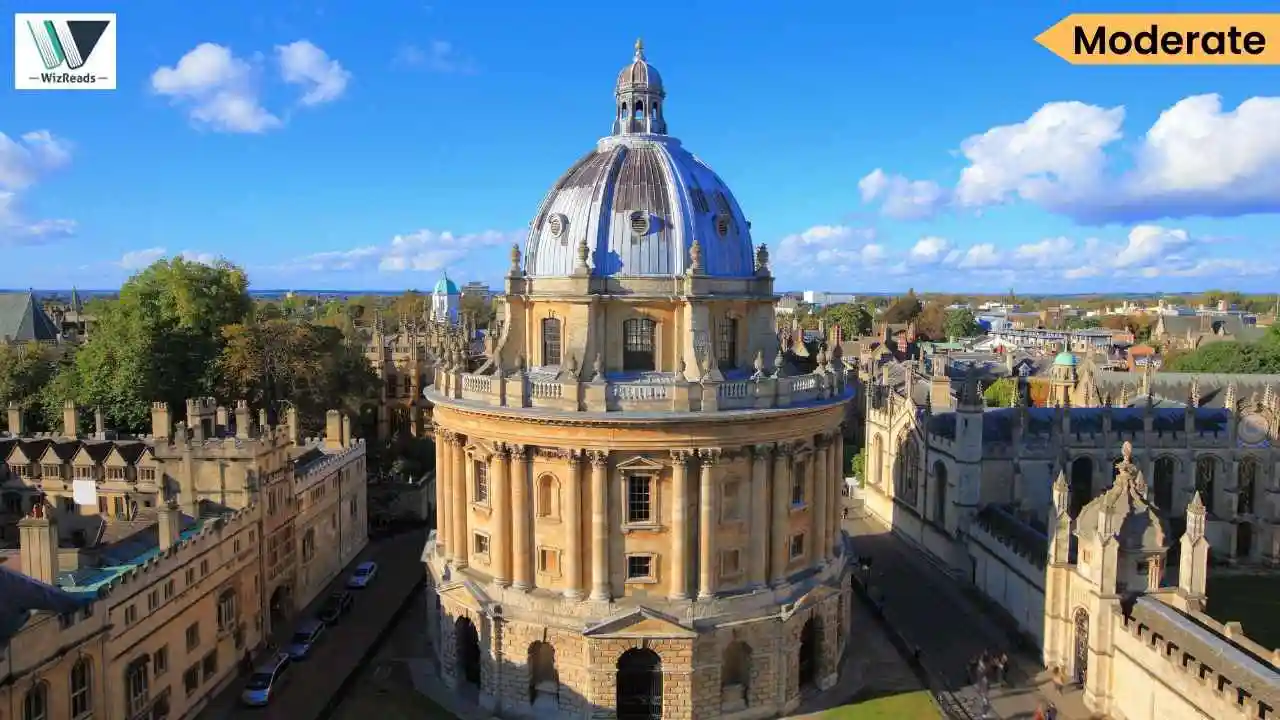
Newsletter Subscribe
Enter your email address below and subscribe to our newsletter

Enter your email address below and subscribe to our newsletter

Did you know that Oxford University is older than the Aztec Empire, which wasn’t founded until 1325? Why do some institutions endure for nearly a millennium while others fade into history? These passages explore the fascinating origins of one of the world’s oldest universities, revealing how political conflicts and unplanned developments shaped an institution that continues to influence global education today.
Read these moderate difficulty RC passage(s) in Social Sciences and answer the question(s) that follows. You can choose the GMAT style Reading Passage and the question or the GRE RC variant and answer the GRE-style question. Even better, you could solve both.
Educational establishments in medieval Europe emerged through complex political and religious dynamics rather than deliberate institutional planning. Oxford’s academic tradition commenced by 1096, predating the standardized university model that would later define Western higher education. Initially functioning as informal gatherings of scholars, these proto-academic communities attracted students through reputation rather than formal recruitment mechanisms. The trajectory of Oxford’s development accelerated dramatically following King Henry II’s 1167 prohibition against English subjects attending the University of Paris. This political decree, stemming from Henry’s conflict with Thomas Becket, the High Chancellor of Great Britain, inadvertently concentrated scholarly activity within England’s borders, transforming Oxford from a modest learning center into a major intellectual hub.
By 1264, Oxford had evolved into a comprehensive university featuring organized residential colleges, structured curricula, and formal governance systems. The institution’s three original halls—University, Balliol, and Merton—represented a fundamental shift from informal education to systematic academic organization. This transformation reflected broader medieval trends toward institutionalization, where religious and political authorities increasingly sought to codify and control intellectual activities. Oxford’s early development exemplifies how major educational institutions often emerge not through planned establishment but through convergent historical forces, political conflicts, and social needs that create favorable conditions for intellectual communities to flourish and formalize.
Which of the following is true about King Henry II based on the passage?
The passage states that Henry II’s “1167 prohibition against English subjects attending the University of Paris” stemmed from “Henry’s conflict with Thomas Becket” and that this political decree “inadvertently concentrated scholarly activity within England’s borders,” transforming Oxford into “a major intellectual hub.” The key word “inadvertently” indicates that Henry’s political actions had unintended educational consequences—he was focused on his conflict with Becket, not on developing English universities, yet his prohibition unexpectedly accelerated Oxford’s growth.
Correct Answer: Choice (D)

Medieval European universities emerged through markedly different trajectories, with Oxford’s genesis contrasting sharply with its continental contemporaries. While universities like Bologna and Paris originated from deliberate ecclesiastical or imperial charters, Oxford’s establishment represented an organic amalgamation of scholarly activity that coalesced around existing monastic schools. Unlike the hierarchical structures imposed upon continental institutions by papal bulls or royal decrees, Oxford developed through incremental accretion of academic practices and informal governance protocols. The University of Paris, for instance, operated under strict clerical oversight with predetermined curricula mandated by religious authorities, whereas Oxford’s early scholars enjoyed considerable autonomy in determining their pedagogical approaches and subject matter.
Additionally, continental universities typically required substantial endowments from wealthy patrons or religious orders before commencing operations, but Oxford’s financial model relied on student fees and modest donations from local benefactors. This divergent foundation profoundly influenced each institution’s subsequent evolution: Paris remained tightly bound to ecclesiastical doctrine and centralized administration, while Oxford cultivated a tradition of intellectual independence and collegiate self-governance that persists today. These contrasting origins demonstrate how institutional DNA, established during formative periods, shapes centuries of academic culture and administrative practice.
Select the sentence that demonstrates how early institutional differences between universities manifested in their long-term organizational characteristics.
The correct answer is “This divergent foundation profoundly influenced each institution’s subsequent evolution……. that persists today. “This sentence demonstrates how early institutional differences between universities manifested in their long-term organizational characteristics by providing specific examples. The sentence shows that Paris’s formal ecclesiastical founding led to “centralized administration” while Oxford’s organic development resulted in “intellectual independence and collegiate self-governance.”
Hello Mam,
In the above passage (GMAT one) option B is incorrect due to its extreme language stating “prohibition was primarily caused by his dispute with Thomas Becket” ?
Pretty much. We know that the political decree “stemmed” from the conflict. So, is the conflict a reason for the prohibition? Yes. Is it the “primary” motivation? We do not know.